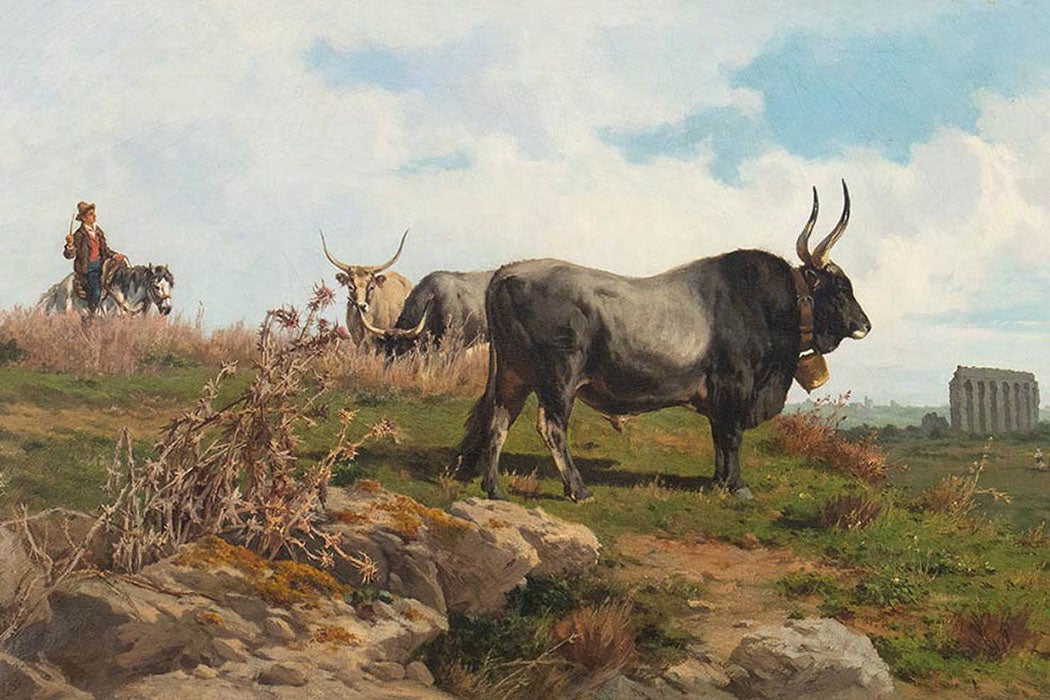Decades before spaghetti westerns, Italians fell in love with an image of the American West carried across the sea by Buffalo Bill Cody’s Wild West Show. Cody’s 1890 tour of Italy sparked some media-frenzy controversy, that best kind of promotion. The bewhiskered showman had insisted that Americans were the best cowboys in the world. Thus was born la sfida (the challenge), which pitted Cody’s colt-ropers against Italian butteri, mounted herders who worked in the Maremma and Pontine marshes. The Italians believed they won, but Cody seems to have played fast and loose with the rules—and historian Renee M. Laegreid writes that la sfida has been cited as an example of American perfidy by Italian critics of the US ever since.
Politics aside, Italians nevertheless took strongly to Cody. His show’s 1906 tour was an even bigger success and travelled to more places on the peninsula. There were even silent documentaries about Cody’s visit, including L’arrivo di Buffalo Bill a Roma (1906). Through the 1920s, dime novels, many starring a Cody character, were translated for Italian readers. Italians started writing their own original Westerns, and, miracolo! a weekly serial of the early 1940s postulated that Cody was actually an Italian named Domenico Tombini transplanted to out West.
After Cody, it was American movies that cemented the fantasy of the wild west in Italy, as they did elsewhere in the world. For a long time, it was a one-way flow. But then, starting in the 1960s, Sergio Leone and others started making what became called “spaghetti westerns” because of their Italian connection. The journey of American TV cowboy Clint Eastwood to movie stardom went through the wild west of…Spain, which stood in for the American West in such Italian/Spanish/German co-productions as A Fistful of Dollars (1964), For a Few Dollars More (1965), and The Good, the Bad, and the Ugly (1966). (Spanish participation and locations beg the question: why aren’t they called “paella westerns”?)
While Germans are famous for being obsessed with Native Americans, Italians identified with cowboys. Not the historic cowboys, who were only briefly relevant to the history of the American West, but the fantasy cowboys of Buffalo Bill and Hollywood.
“To Italian rodeo enthusiasts, the American cowboy represents a sense of fair play, recognition based on personal merit rather than class or wealth, and strong connection to horses and the outdoors,” writes Laegreid.
Italian rodeo is a real thing, as is the fascination with the American Quarter Horse, a breed in such demand that they have been shipped over for those that can afford them.
Laegreid describes the Cowboys’ Guest Ranch, located between Milan and Genoa, as one of the epicenters of the Italian western craze. For children, the ranch has an associated Cowboyland theme park, and one of the ranch’s owners has even developed an elementary school curriculum on the American West. The ranch runs rodeos on Professional Rodeo Cowboys Association (PRCA) lines, right down to restricting women’s participation to one event: barrel racing. In 2005, American barrel racing champion Shannon Kerr moved to Italy and inspired a big increase in Italian women and girls competing in the event. The Cowboys’ Guest Ranch show, Laegried reports, is very much like Buffalo Bill’s, only instead of actual Native Americans (too expensive), the Indians are portrayed by French performers.
Weekly Newsletter
Spaghetti westerns were darker, more violent, and highlighted antiheroes much more than traditional Hollywood westerns. If the traditional western was a white hat/black hat celebration of white civilization taming the frontier, spaghetti westerns were at heart revisionist, anti-western westerns. Of course, Hollywood made anti-western westerns as well, especially in the 1960s and beyond. Critiquing the old myths became the name of the game, with participants including Clint Eastwood, as director and actor (see Unforgiven, 1992).
The history of the American West, in other words, has been re-written in the last half century, popularly as well as academically. But these revisions haven’t translated. Italian western and rodeo fans, writes Laegried, “seem to have little interest in exploring the untoward side of America’s western past or present.”
An “uncritical acceptance of a myth” of the Old West is alive and well and living in Italy.
Support JSTOR Daily! Join our membership program on Patreon today.







